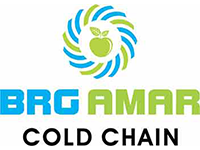It is necessary to preserve the quality of sensitive goods while transporting them from one place to another. Cold chain management is a game changer in streamlining the process of delivering foods while preserving the integrity of perishable food products.
Therefore, it is necessary to maintain the temperature of the cold storage. However, the question is how cold storage companies handle temperature-sensitive goods. Do you have the same question? This broadcast will help you get the required information. Let’s start.
Steps to Handle Temperature-Sensitive Goods
As we all are aware it is necessary to keep sensitive products and food at the right temperature, otherwise they will lose their integrity. Therefore, frozen cold storage manages the temperature. Here we describe how supply chain & logistics management handles temperature-sensitive goods.
Planning and Preparation
- Understand Temperature Needs: You have to know the specific temperature range required for the sensitive goods.
- Route Planning: Select the most efficient route to minimize transit time and exposure to external conditions.
- Regulatory Compliance: Make sure compliance with local and international regulations for transporting temperature-sensitive goods.
Packaging
- Choose Appropriate Packaging: Select insulated packaging materials that help in maintaining the necessary temperature range.
- Use Temperature Stabilizing Materials: There are several types of temperature-stabilizing materials like gel packs, dry ice, or phase change materials that help you maintain the temperature.
- Consider Secondary Packaging: For including protection, user secondary packaging offers extra insulation and shock absorption.
Transportation
- Select Suitable Transport Modes: In order to handle temperature-sensitive goods, it is good to utilize refrigerated trucks, air cargo with temperature control, or insulated containers for sea freight.
- Temperature Monitoring: Use data loggers and GPS tracking devices in order to monitor the sensitive good’s temperature in real time.
- Minimize Transit Time: Look for direct routes and minimize handling to reduce the risk of temperature excursions.
Storage
- Refrigerated Warehouses: You have to utilize the facilities that maintain the necessary temperature range.
- Inventory Management: Implement first-in, first-out practices in order to make sure goods are used before they expire.
- Regular Maintenance: Make sure cooling systems are regularly maintained and checked to ensure the equipment works well to keep the products at the required temperature.
Handling
- Trained Personnel: Make sure that the staff of frozen food cold storage has the necessary knowledge and training in handling temperature-sensitive goods.
- Minimize Exposure: Limit the time goods are exposed to a non-controlled environment during unloading as well as loading .
Final Notes
It is true that cold chain logistic management is necessary for ensuring the safe and efficient transportation of temperature-sensitive goods. These sensitive products include pharmaceuticals, food products, chemicals and other items that need specific temperature ranges to maintain their quality and safety. The above-listed information will be helpful in handling temperature-sensitive goods.

